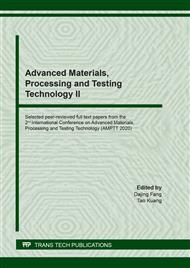p.134
p.147
p.153
p.159
p.165
p.170
p.176
p.189
p.203
Effect of Tensile Stress on Characteristics of High-Temperature Superconducting Tape
Abstract:
With the discovery of high-temperature superconducting (HTS) tape and the improvement of the performance of the second-generation HTS tape, the application of superconductors in power system is gradually unfolding. There have been many demonstration projects at home and abroad. When the HTS tape is applied to the power cable, the mechanical external action of the cable winding, laying and installation operations, and the Ampere force when the current is applied are applied to it. Stress has an important influence on the critical current characteristic of the superconducting tape. In different application scenarios of the tape, different materials and thicknesses reinforcement layers can be chosen. In this paper, for the YBCO superconducting tapes with different reinforcement layers, a set of systems with critical current under tensile stress at cryogenic temperature is used to study the influence of tensile stress on the critical current of superconducting tape at low temperature. We analyze the influence of the structure of the superconducting tape on the characteristics of the tape and studied its degradation characteristics, which have guiding significance for the design and operation of the superconducting cable.
Info:
Periodical:
Pages:
165-169
Citation:
Online since:
January 2021
Authors:
Keywords:
Price:
Сopyright:
© 2021 Trans Tech Publications Ltd. All Rights Reserved
Share:
Citation:


